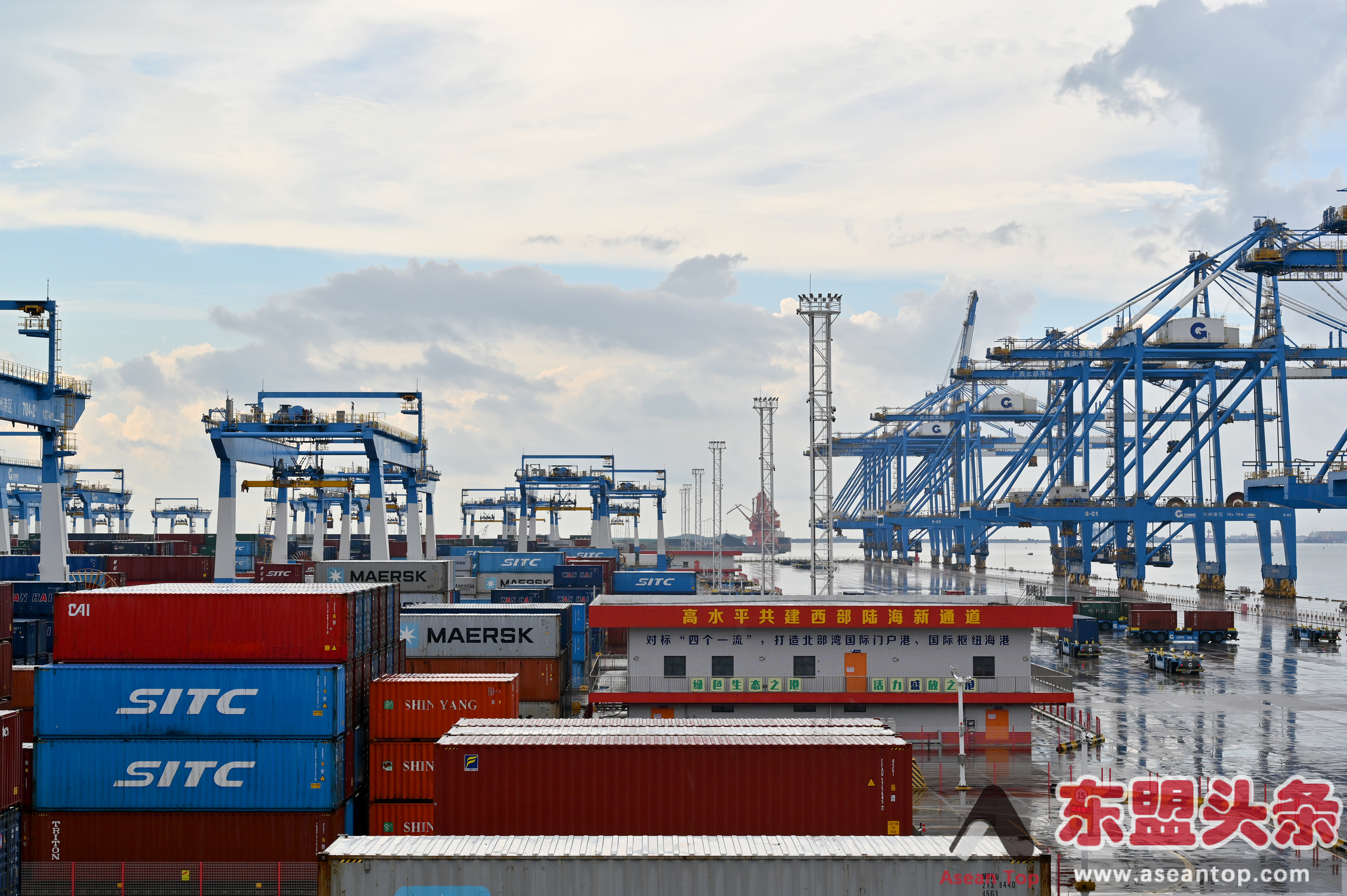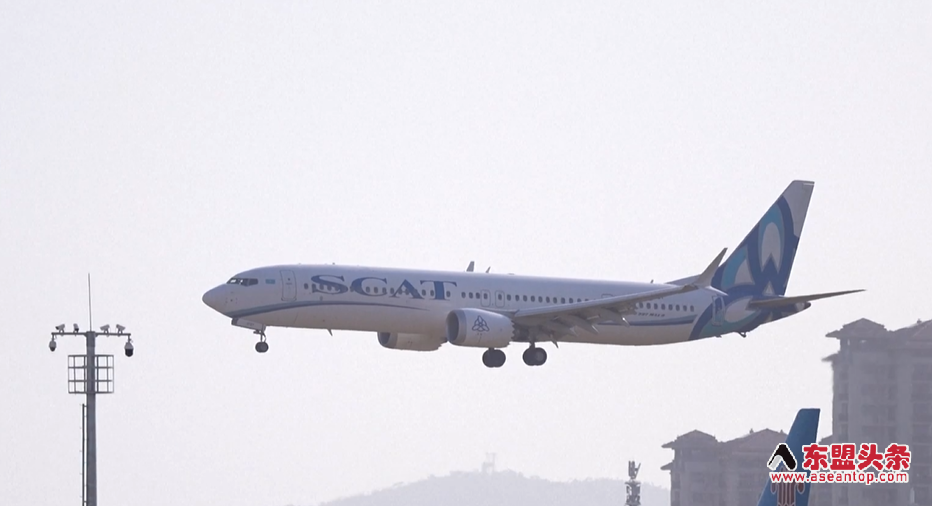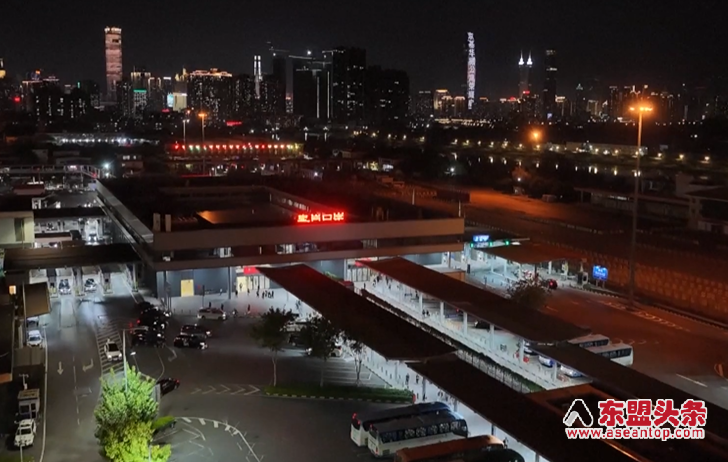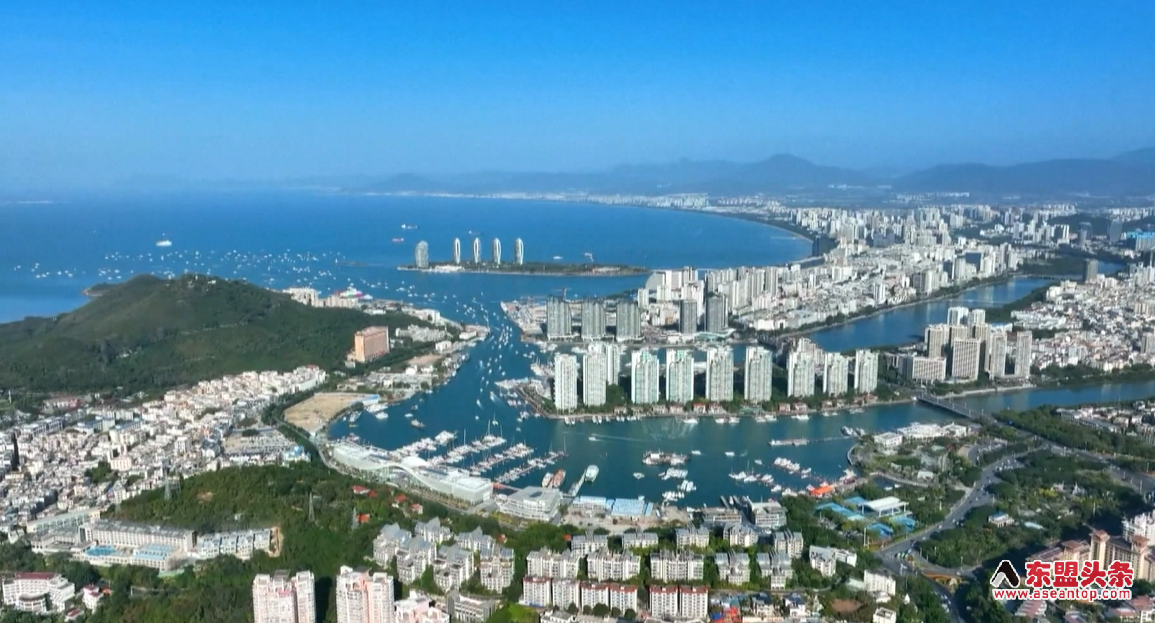At the automated container terminal of Qinzhou Port, located in Beiwan Port, Guangxi, several large container ships are docked, and large gantry cranes tens of meters high are operating with "giant arms". In the distant sea area, tugboats are escorting the smooth landing of large ships...

the automated container terminal of Qinzhou Port photo by Yujing
Qinzhou Port is an important hub of the new land-sea channel in western China. It has built the world's first U-shaped process and China's first automated container terminal for sea-rail combined transportation. Song Haitao, executive director and general manager of Guangxi Qinzhou Free Trade Port Shenggang Terminal Co., LTD., introduced that the terminal has fully launched the container intelligent cargo handling system to realize paperless and fast handling of port business, which is increasingly attractive to the cargo sources of southwest China, central and south China and even China-Europe freight trains. Beibu Gulf Port has a total of 48 foreign trade container routes, which can directly reach Southeast Asia, Northeast Asia, India, South Africa, Brazil, Canada and other regions. By the end of July 2024, there will be 35 shipping routes from Beibu Gulf Port to ASEAN countries, covering all major ports in the ASEAN region.
Not far away, the Qinzhou Railway Container Center Station and the automated container terminal form a complete rail-sea combined transport system. In April 2017, the new western land-sea corridor rail-sea combined transport train started from here. The number of container goods transported by the trains has increased from 3,382 TEUs in 2017 to 861,000 TEUs in 2023, and the types of goods transported by the trains have increased from dozens of ceramics and plates to 1,157 types of auto parts and new energy materials. A large number of goods from western China and ASEAN countries converge here.
Construction of the Pinglu Canal, the backbone of the new land-sea corridor in western China, has begun. As of August this year, a total investment of 38.6 billion yuan has been completed. Starting from Nanning, Guangxi, the Pinglu Canal runs along the Qinjiang River and enters the Beibu Gulf through Luwu Town, Lingshan County, Qinzhou, with a total length of 134.2 kilometers. Upon completion, it will become the shortest, most economical and convenient passage to the sea in southwest China. Song Haitao introduced that the Beibu Gulf port has made it preliminary clear that it will form 7 river-sea combined transport operation groups including 5 operation areas in Qinzhou port area, and implement a series of new berthing and renovation projects to ensure that the demand for river-sea combined transport and freight brought by the Pinglu Canal can be met.
With the increasing radiation capacity of the new land-sea corridor in western China, more and more enterprises are investing in the Qinzhou Port area of the China (Guangxi) Pilot Free Trade Zone to expand production and accelerate China-Asean cross-border industrial cooperation. In recent years, leading chemical projects such as petrochina, Huayi, Hengyi and Tongkun have been introduced to the Qinzhou Port area of the China (Guangxi) Pilot Free Trade Zone. A number of new energy battery material industries such as Zhongwei, Gepei and Yabao have started operation, and a number of offshore wind power equipment manufacturing projects such as the Vision Smart Energy industrial base, the China Shipbuilding Guangxi Offshore Wind Power Industrial Base and Jinfeng Marine Heavy Industry have been completed and put into operation. Port industrial clusters such as green petrochemicals, new energy materials, equipment manufacturing, grain, oil and food processing, and forest pulp and paper are gaining momentum along the northern Bay.
Entering the No. 2 paper machine production line workshop of Guangxi Jingui Pulp and Paper Co., LTD., with a total length of 476 meters, the machine is humming. From dehydration and rolling of pulp raw materials to packaging and transportation of final finished paper, large papermaking machinery and equipment are operated automatically. "Such an automated production line can produce 1.3 million tons of industrial paper per year." Site staff said.
Guangxi Jingui Pulp and Paper Industry Co., Ltd. is a large pulp and paper joint enterprise invested and constructed by Indonesia Golden Light Group. Guangxi has good forestry resources and is connected with ASEAN by land and sea, and is located at the forefront of China's opening up and cooperation with ASEAN. Since 2003, Sinoguang Group has laid out forest, pulp and paper integration projects in Qinzhou, relying on the port to carry out convenient foreign trade, becoming the "pioneer" of Lingang Industrial Zone. In 2023, the output of chemical machinery pulp will be 1.32 million tons, and the output of white card paper will be 2.45 million tons, with an output value of 10.7 billion yuan.
Zhou Ju, customs director of logistics Department of Guangxi Jingui Pulp and Paper Co., LTD., introduced that at present, the company imports wood pulp, starch, wood chips and other raw materials from Indonesia, Thailand, Vietnam and other ASEAN countries, while white card paper products are exported to Southeast Asian countries such as Thailand, Vietnam, Malaysia, Middle East countries such as the United Arab Emirates, as well as European countries such as Italy and Russia. In 2023, the enterprise will export 470,000 tons of white card paper, accounting for more than 99% of the export through the Beibu Gulf port. The increase of direct routes and the establishment of automated terminals in Beibu Gulf Port year by year have improved operation efficiency and shortened delivery time, helping to stabilize and expand overseas markets.
After the completion of Pinglu Canal, it will further promote the economic and trade exchanges between Guangxi and ASEAN countries. Zhou said enterprises will have wider market choices in raw material import and product export, which is conducive to building upstream and downstream industrial clusters and building a modern industrial system. The construction of the Pinglu Canal will also significantly improve the inland river transportation capacity, and the transportation cost of bulk materials such as wood chips, ore and paper products is expected to be reduced, further enhancing the confidence of enterprises in investment and development.





